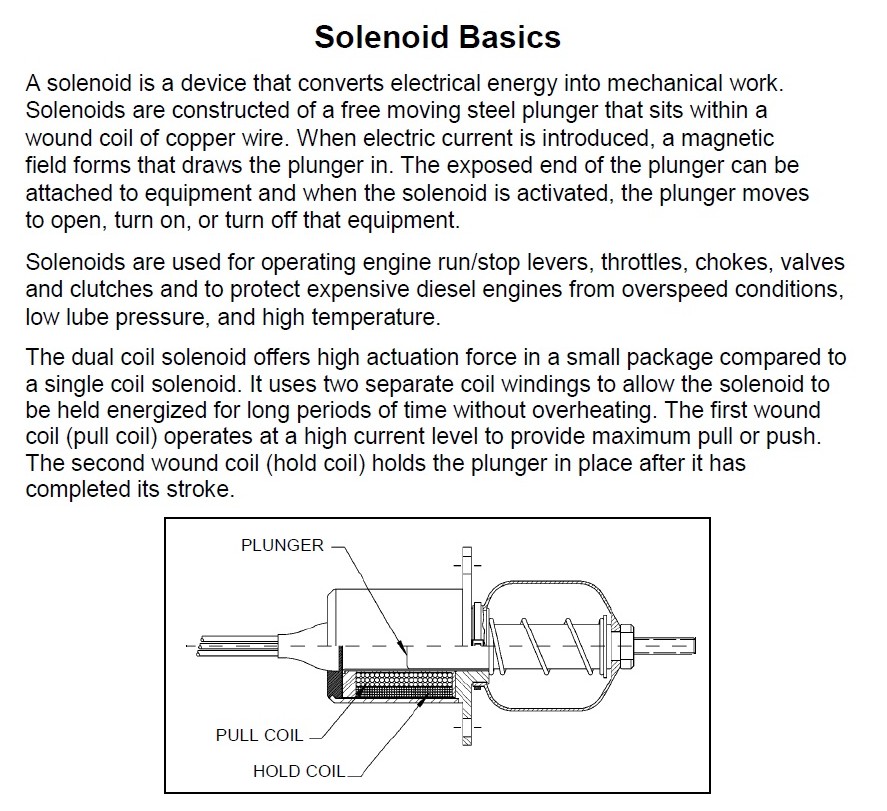Solenoids 101
How does a solenoid work?
 A solenoid is
simply a specially designed electromagnet. A solenoid usually consists of a coil
and a movable iron core called the armature.
Or a plunger in our case. Here's how it works. When current flows through a
wire, a magnetic field is set up around the wire. If we make a coil of many
turns of wire, this magnetic field becomes many times stronger, flowing around
the coil and through its center in a doughnut shape. When the coil of the
solenoid is energized with current, the core moves to increase the flux linkage
by closing the air gap between the cores. The movable core is usually
spring-loaded to allow the core to retract when the current is switched off. The
force generated is approximately proportional to the square of the current and
inversely proportional to the square of the length of the air gap.
A solenoid is
simply a specially designed electromagnet. A solenoid usually consists of a coil
and a movable iron core called the armature.
Or a plunger in our case. Here's how it works. When current flows through a
wire, a magnetic field is set up around the wire. If we make a coil of many
turns of wire, this magnetic field becomes many times stronger, flowing around
the coil and through its center in a doughnut shape. When the coil of the
solenoid is energized with current, the core moves to increase the flux linkage
by closing the air gap between the cores. The movable core is usually
spring-loaded to allow the core to retract when the current is switched off. The
force generated is approximately proportional to the square of the current and
inversely proportional to the square of the length of the air gap.
Solenoids are inexpensive, and their use is primarily limited to on-off applications such as latching, locking, and triggering. They are frequently used in home appliances (e.g. washing machine valves), office equipment (e.g. copy machines), automobiles (e.g. door latches and the starter solenoid), pinball machines (e.g., plungers and bumpers), and factory automation.
The internally switched solenoid utilizes a mechanical double contact switch that is mounted on the rear of the solenoid to turn off the pull coil. Internally switched solenoids are best suited for applications such as standby generator sets or other applications where vibration, dirt, moisture, and excessive cycling are not present.

An Aux terminal is a feature offered on some internally switched solenoid models. A lamp or a relay coil (50 ohms minimum) could be wired across the positive and Aux terminals of the solenoid to illuminate or trip a relay when the solenoid plunger is fully seated (energized position) in the solenoid bore, indicating the solenoid pull-in coil is switched off and the hold coil is energized.

